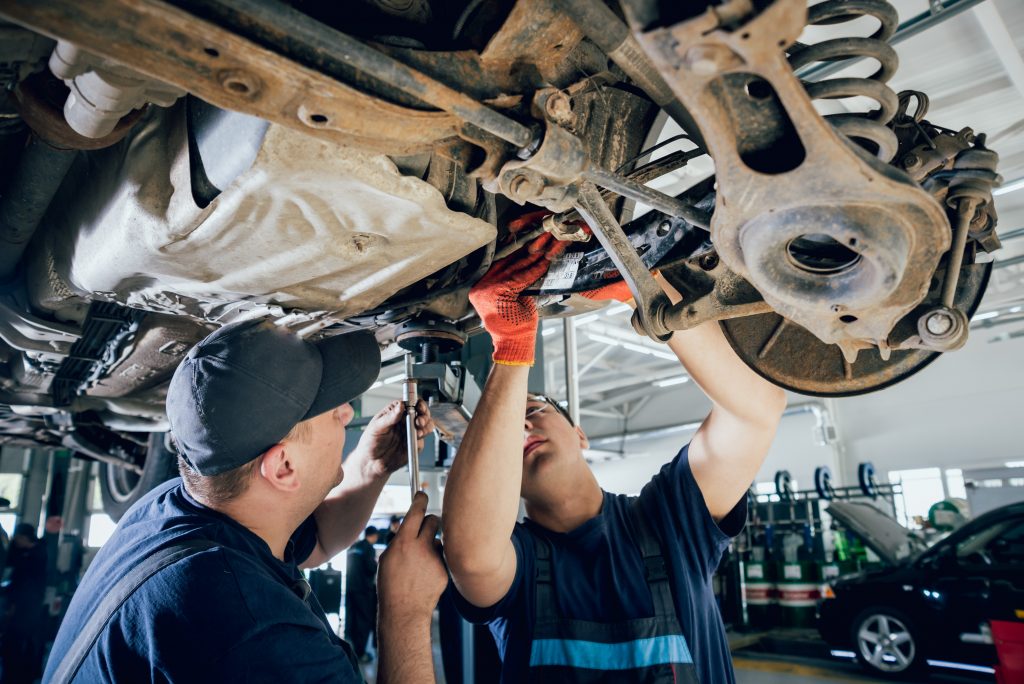Working people need to be able to cover the basics for our state to truly prosper. When Mainers can reliably pay for transportation, food, housing, child care, and other necessities, it’s easier for them to work, take care of their families, and be active participants in their communities.
Unfortunately, many Mainers struggle to make ends meet even when they’re working hard,1 and our out-of-balance tax code — which makes the poor pay more of their income in state and local taxes than the very wealthy — just makes matters worse.
The Maine Earned Income Tax Credit, or EITC, helps on both fronts; It boosts incomes for hardworking Mainers with low-to-moderate incomes and it helps make our tax code a little fairer to the families and individuals who don’t benefit as much as the wealthiest do from recent state and federal income tax cuts.

Maine can build on the success of its EITC to help even more Mainers get ahead.
This session, the Legislature will consider a proposal to expand and modernize Maine’s EITC. The bill, LD 1491, would replace the state’s EITC with a new “Maine Work Credit.” The Maine Work Credit would build on the success of the EITC in four key ways:
Increasing benefits for eligible households
The Maine Work Credit would increase the maximum credit available to Mainers so they could better keep up with the rising costs of health care, child care, and other basics. Learn more »
Expanding eligibility to middle-class families
The Maine Work Credit would boost incomes for more households making more middle-class families eligible than the current Maine EITC. Learn more »
Recognizing hard work in the home and the classroom
Work has value, even when it doesn’t come with a paycheck. The Maine Work Credit expands benefits to low-income college students and home caregivers. Learn more »
Spreading benefits throughout the year
LD 1491 would lay the groundwork for a regular “Cost of Living Refund,” which would combine the Maine Work Credit with other refundable tax credits for low-income Mainers and distribute them as monthly or quarterly payments, instead of one lump sum during tax season. Learn more »
Increasing benefits for eligible households

The Maine EITC puts nearly $10 million in the pockets of low-income Mainers to encourage work and improve local economies.4 But Mainers’ basic expenses aren’t getting any cheaper,5 and our state is falling behind national efforts to boost incomes and support work for low-income residents.
At just 5 percent of the value of the federal credit, Maine’s EITC is the smallest in New England and among the smallest state-level credits in the country. For comparison, Vermont offers a state EITC worth 36 percent of the federal credit.6
A stronger, expanded state credit would help working Mainers keep up with the rising cost of living. At 30 percent of the federal EITC for families with children, the Maine Work Credit would return as much as $1,967 to a family with three dependents when they file their state income tax return in 2021.
We all benefit when working people can make ends meet. The Maine Work Credit is more money for low-income Mainers to afford the basics, pay off debts, or cover expenses such as car repairs so they can keep working.
The Maine Work Credit also would address a shortcoming in the current EITC that effectively penalizes working adults who don’t have children. While the federal EITC is tremendously effective at helping families with kids, childless adults receive a credit that’s disproportionately small.
To mitigate the disparity between the federal credits for families with children and those without them, the Maine Work Credit would match 100 percent of the federal EITC for adults who don’t have children. This increase would offer up to a $530 credit to low-income adults without children when they file their state taxes in April of 2021.
Expanding eligibility to middle-class families

The Maine EITC does a great job at helping the poorest households keep their heads above water. But growing income inequality means more middle-class families are also struggling to stay afloat. The Maine Work Credit counters economic inequality by expanding eligibility further into the middle class.
Today, depending on family size and income, households with children become ineligible for the Maine EITC at incomes as low as $40,320. People without children are ineligible at income levels as low as $15,270.
The Maine Work Credit would simplify and expand eligibility, so that all families with children would receive a credit for earned income up to $55,000, and childless adults would receive a credit for earned income up to $27,000. The Maine Work Credit also would be available to independent, childless working adults under 24 years old, who currently are locked out of benefits from the Maine EITC.
The increased benefit and broader eligibility of the Maine Work Credit would improve the fairness of Maine’s tax code. A key value of our tax system is that people who prosper the most from our economy should pay taxes that reflect that prosperity. That allows us to invest more in the things that lift up all people.
Maine Work Credit would improve the fairness of Maine’s tax code.
But today, the wealthiest 1 percent of Mainers pay a lower total effective state and local tax rate than the poorest 20 percent.7 Boosting income tax credits for low- and middle-income households helps balance our overall tax code.
Figure 1:
Maine Work Credit would improve fairness in Maine’s tax code
Table 1:
Maine Work Credit gives tax cut to bottom 80 percent of Maine households
The Maine Work Credit, on average, would deliver a tax cut to the bottom 80 percent of Maine households.
The poorest one-fifth of households would receive an income tax cut of $427 on average, lowering their
effective state and local tax rate from 8.7 percent of their income to 4.9 percent.
Recognizing hard work in the home and the classroom



The EITC combats stagnating wages and inequality by giving a break to low-income tax filers who work, as determined by whether they reported earned income in their tax return. But that definition of work excludes some Mainers who work hard but don’t earn a paycheck.
Many Mainers, mostly women, work tirelessly to care for a child or senior in their home. Similarly, college students put in long hours in the classroom and on their studies to improve their job prospects and enrich
Maine’s workforce.
The Maine Work Credit would recognize and reward the work of family caregivers and students enrolled at least half-time in a Maine college or university. Those students and caregivers would be eligible for a
minimum credit equal to half of the maximum benefit — $265 for a childless adult, for example, or $984 for a family with three dependents.
These eligibility-expanding provisions of the Maine Work Credit would benefit at least 14,400 caregivers and 1,600 qualifying students who were previously ineligible for the Maine EITC.8
Spreading benefits throughout the year


In addition to creating the new Maine Work Credit, LD 1491 would lay the groundwork for a transformative new approach to refundable tax credits — one that could help working poor Mainers create and stick to a budget and keep up with their monthly expenses.
The EITC is just one of several credits that boost economic security for low-income Mainers by offsetting unfair elements of our tax code. For example, poorer Mainers pay more of every dollar they earn to the sales
tax and property tax than wealthier Mainers and can receive refundable credits to help compensate for that inequality.
Together, the EITC, Property Tax Fairness Credit, and Sales Tax Fairness Credit can add up to a significant tax refund or low-income Mainers. LD 1491 would begin the process of creating a Cost of Living Refund, which would let eligible Mainers receive those credits in regular installments,
rather than as one lump sum during tax season.
Monthly or quarterly payments would help working Mainers cover regular expenses such as rent, food, or child care. People who prefer the larger, one-time refund could still receive it.
Conclusion

The federal EITC is one of the most commonsense elements of our tax code and is one of the best tools available for reducing poverty.9 The Maine EITC has successfully amplified the benefits of the federal credit. But Maine can do even more to put working people in the driver’s seat of their own economic security by modernizing and expanding the EITC through the Maine Work Credit.
Putting more money back into the pockets of the working people who need it most is a simple and effective way to fight rising economic inequality and financial instability.
The Maine Work Credit would reach twice as many households as the Maine EITC— roughly a quarter of Maine’s households or 177,000 families.10
The extra cash in their pockets would improve their financial security and help support our economy. 11
Endnotes
1 Maine Center for Economic Policy. “Could you cover an unexpected $400 expense? Nearly half of Mainers could not” Available at: https://www.mecep.org/could-you-cover-an-unexpected-400-expense-nearly-half-of-mainers-could-not/
MECEP analysis of IRS SOI 2016 data available at: https://www.irs.gov/statistics/soi-tax-statsindividual-income-taxreturn-form-1040-statistics
Data provided by the Institute on Taxation and Economic Policy. January 2019
Maine Revenue Services 2019 Tax Expenditure Report. Available at: https://www.maine.gov/revenue/research/tax_
expenditure_report_17.pdf
The cost of health insurance, 4 year college, and childcare have all outpaced inflation. See Henry J Kaiser Family Foundation, 2018 Employer Health Benefits Survey. Available at: https://www.kff.org/report-section/2018-employerhealth-benefits-survey-section-1-cost-of-health-insurance/; College Board, Tuition and Fees over Time. Available at: https://trends.collegeboard.org/college-pricing/figures-tables/tuition-fees-room-board-over-time; U.S. Census Bureau, Child Care Costs on the Upswing, 2013. Available at: https://www.census.gov/newsroom/press-releases/2013/cb13-62.html
See: Maine Center for Economic Policy. “The Prosperity Budget.” January 2019. Available at: https://www.mecep.org/prosperitybudget
Data provided by the Institute on Taxation and Economic Policy, February 2019
Center on Budget and Policy Priorities. “Policy Basics: The Earned Income Tax Credit.” April 2018. https://www.cbpp.org/research/federal-tax/policy-basics-the-earned-income-tax-credit
Data provided by the Institute on Taxation and Economic Policy, January 2019
For example, the $212 million Mainers receive results in an additional $35 million in economic activity and supports about 2,000 jobs, according to MECEP analysis using IMPLAN.



